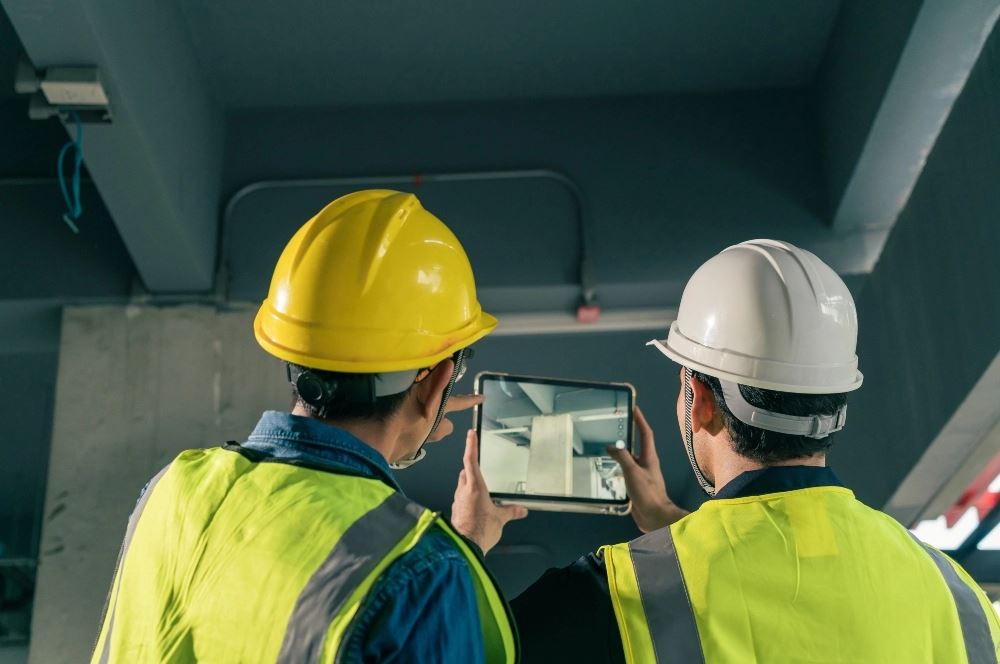
Monitoring a construction site is important for ensuring safety, catching mistakes early, managing subcontractors, and ensuring each part of the job is done to spec. The bigger the project, the harder it is to keep an eye on everything.
Tech-driven site monitoring systems can give site managers and project leads a clearer view of what’s happening without the need to physically walk every corner of the site every day.
Modern tools track timelines and support everything from remote roof inspections to automated progress documentation. They reduce site visits, lower safety risks, and free up your team’s time so they can focus on actual project delivery.
Why Traditional Site Monitoring Slows Teams Down
Manual site monitoring usually involves someone with a clipboard or tablet walking the site, taking photos, checking off tasks, and trying to keep up with dozens of moving pieces. It can be time-consuming, repetitive, and unreliable.
Here’s what often happens:
- Missed issues during walkthroughs
- Delays between inspections and reporting
- Unclear documentation for insurance or compliance
- Safety hazards not flagged early enough
- Rework due to unreported quality problems
By the time many of these issues get noticed, the project has moved on. Fixing them becomes harder, more expensive, and more disruptive. Using advanced tools for monitoring shifts this dynamic. Instead of depending on occasional walkthroughs, teams can use real-time platforms to keep track of what’s happening while staying off ladders and out of hazardous zones.
One of the most significant improvements is remote technology like a remote roof inspection platform. This lets teams assess areas from the ground using mounted cameras or automated uploads instead of accessing dangerous areas.
Combined with site progress documentation automation, site monitoring efficiency tools:
- Create visual records with timestamps
- Log inspections automatically
- Sync updates across the project team
- Help managers spot problems early
Because everything is stored in one place, there’s no need to search through folders or ask someone to re-send old site photos.
Construction Documentation Automation Keeps Projects Moving
Efficient monitoring depends on reliable documentation. Teams need to know not only what’s happening now but also what happened last week and what might have been missed two months ago. Site monitoring efficiency tools can solve this by capturing records as the work happens. Teams take photos or fill out checklists on their phones, and the system tags the entry with location and time and uploads it to a shared dashboard.
Improving Safety Without Slowing the Job Down
Monitoring systems also play a big role in site safety. Remote inspection tools and automation platforms reduce the need for risky physical inspections. Crews don’t have to climb unstable scaffolding or crawl into tight areas just to document progress.
Instead, they use tools like:
- Fixed ground cameras for time-lapse views
- A remote roof inspection platform for roofs and hard-to-reach zones
- Visual walkthroughs captured via mounted cameras or mobile phones
These tools reduce safety risks and help projects meet compliance requirements with less admin work. Teams no longer have to dig through months of records to find the right documentation as it’s already there, timestamped, sorted, and ready.
How These Tools Help Project Leads Stay Ahead
When you manage more than one project (or even just one large site), these tools give you a level of visibility that’s hard to achieve through manual methods.
Instead of walking the entire site every day, you can:
- Check high-risk areas remotely
- Review recent progress in real-time
- Pull up historical data in seconds
- Track which subcontractor completed each task
- Flag any gaps or irregularities early
For large firms, this level of oversight helps standardize processes. It also supports better collaboration between field and office teams. Everyone is looking at the same data, presented the same way.
From Monitoring to Forecasting
With consistent, structured data coming from automated systems, teams can go beyond monitoring; they can start predicting where things will go wrong next. Site monitoring efficiency tools can create a digital record of every milestone. Over time, that record becomes helpful in data teams, and research analysts can work out how long tasks take, which contractors underperform, and how site conditions affect delivery. AI data analysts can take it further by identifying patterns leading to delays or risks. That lets companies adjust timelines early, reassign resources, or shift work to different crews before minor issues become project-wide problems.
Final Thoughts
Modern site monitoring tools help construction teams work smarter. They reduce safety risks, streamline documentation, and give project managers real-time visibility into every corner of the site.